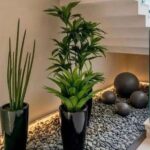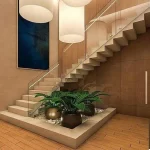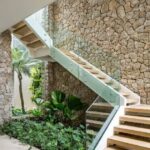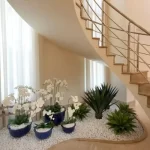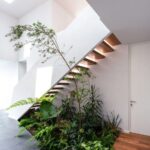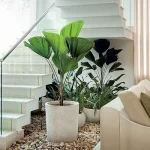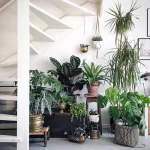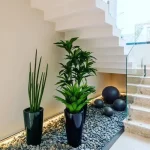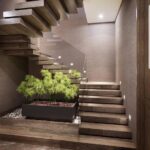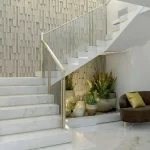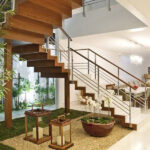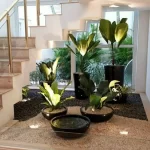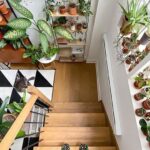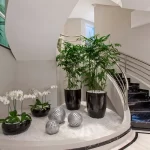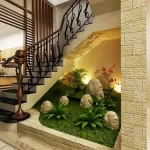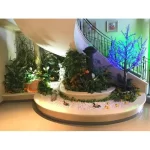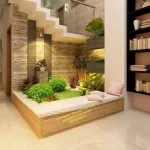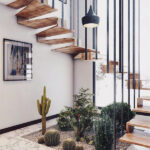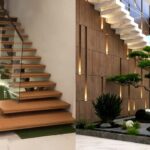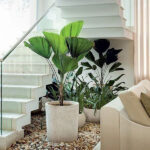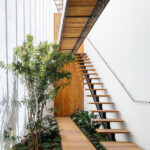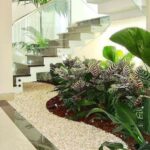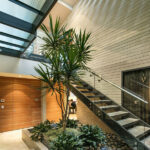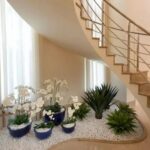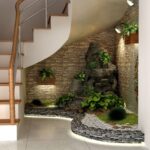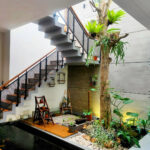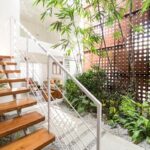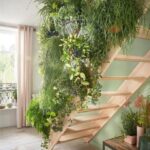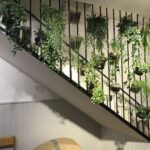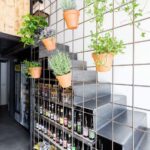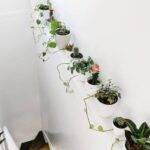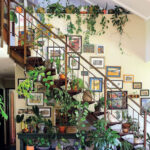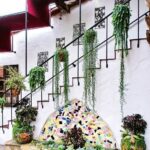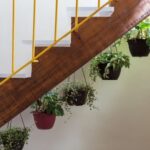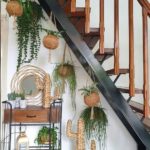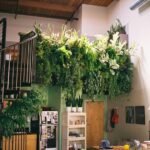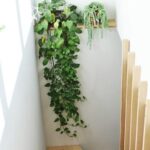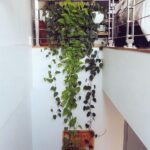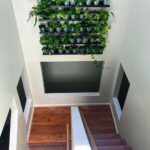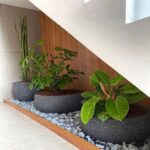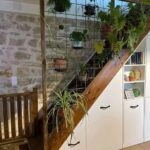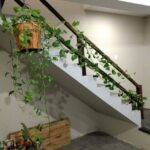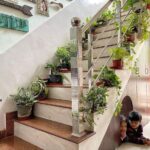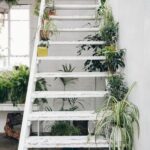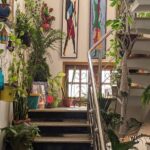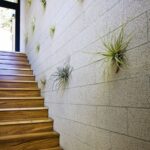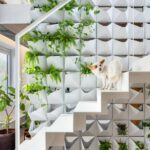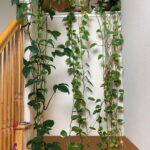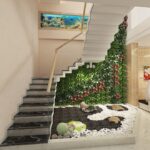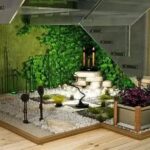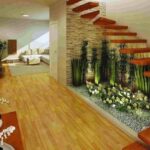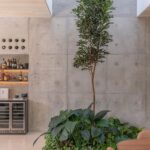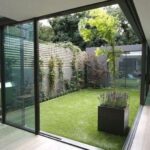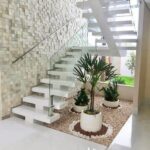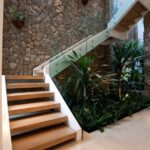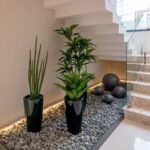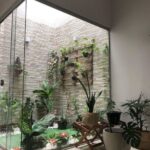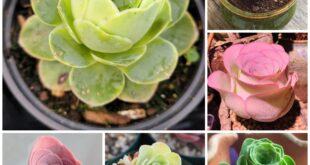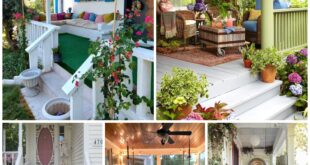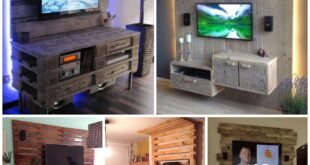Incorporating plants into your stairway design can transform an often-overlooked area into a lush, inviting focal point of your home. This approach not only enhances the aesthetic appeal but also brings the benefits of greenery indoors, such as improved air quality and a sense of tranquility. Here are several ideas to inspire you in integrating plants into your stairway design.
1. Potted Plants on Each Step
One simple yet effective way to incorporate greenery is by placing potted plants on each step of your staircase. Opt for small to medium-sized pots to avoid obstructing the walkway. Choose a variety of plants with different heights and textures to create visual interest. Succulents, ferns, and small flowering plants are excellent choices.
2. Vertical Garden on the Stairwell Wall
Turn the wall adjacent to your stairs into a vertical garden. Install wall-mounted planters or hanging pots to create a cascading effect. This approach works particularly well in stairwells with plenty of natural light. Plants like pothos, ivy, and spider plants, which thrive in vertical arrangements, are ideal for this setup.
3. Plant Shelves Along the Staircase
Install shelves along the staircase wall to display an array of potted plants. These shelves can vary in size and shape, allowing you to showcase different types of plants and decorative items. Floating shelves provide a modern touch, while wooden ledges can add a rustic charm. Be sure to secure the shelves properly to handle the weight of the plants and pots.
4. Hanging Planters from the Ceiling
For a dramatic and eye-catching effect, consider hanging planters from the ceiling above your staircase. Use macrame hangers or sleek, modern hanging pots to suspend plants at various heights. This approach not only saves floor space but also creates a dynamic, layered look. Plants with trailing vines, like philodendrons or string of pearls, are perfect for hanging planters.
5. Built-in Planters on Staircase Landings
If your staircase includes one or more landings, use these spaces for built-in planters. Custom-built planters can seamlessly integrate with the design of the stairs, offering a clean and sophisticated look. Fill these planters with lush greenery or even small trees, depending on the available space and light conditions.
6. Step-edge Planters
For a unique twist, incorporate planters directly into the edges of your stairs. This can be achieved by designing steps with built-in compartments or by attaching planter boxes to the side of each step. This design not only adds greenery but also gives your staircase a distinctive, modern look.
7. Rail Planter Boxes
Attach planter boxes to the stair railings to create a continuous line of greenery. This method works particularly well for staircases with open railings. Use lightweight, narrow planters to avoid adding too much weight or bulk. Choose plants that can handle partial shade if your stairwell doesn’t receive direct sunlight.
8. Large Floor Plants at the Base or Top
Place large floor plants at the base or top of your staircase to frame the entryway and draw attention to the stairway. Tall plants like fiddle leaf figs, rubber plants, or palms can make a bold statement and add a tropical feel to your home. Ensure these plants have enough space to grow without obstructing movement.
Tips for Maintaining Stairway Plants
- Light Conditions: Choose plants based on the light available in your stairwell. Stairways with ample natural light can accommodate a broader range of plants, while low-light areas might require shade-tolerant species.
- Watering: Ensure easy access to your plants for regular watering. Consider using self-watering planters or drip irrigation systems for high-maintenance arrangements.
- Safety: Make sure that plants and planters are securely positioned to prevent accidents. Avoid placing large or heavy pots where they could be easily knocked over.
- Air Circulation: Good air circulation is vital to prevent mold and mildew, especially in stairwells that might be enclosed or have less airflow.
 TopsDecor.com Home Decor Ideas
TopsDecor.com Home Decor Ideas
